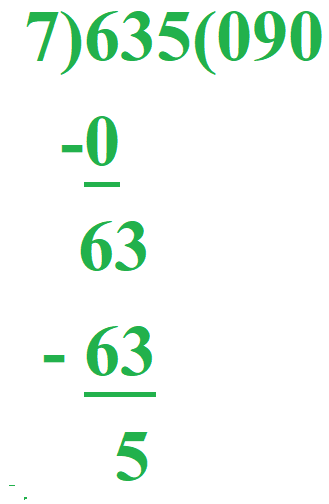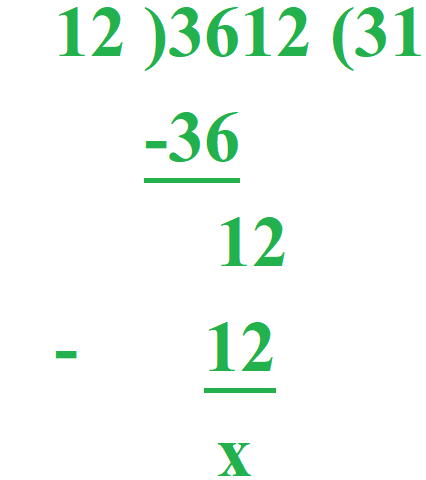Division is a continued subtraction process.
12 / 4 is basically getting the remainder 0 or less than 3 after repeated subtraction.
12 - 4 = 8 (1st step)
8 - 4 = 4 (2nd step)
4 - 4 = 0 (3rd step)
In order to get the result quickly, we multiply the divisor with a number that gets us closer to dividend. Ex :- 7)635(
Since subtracting 7 repeatedly from 635 will take long time so we reduce this process of subtracting a number by choosing a number by which 7 should be multiplied to get a number closer to 635.
Now look at the question.
In the second step, after subtraction when a digit (5) carried down is less than the divisor (7), we need to place a zero in the quotient.This can be understood in other ways. If we don't restrict a child to multiply a divisor by a number in between 1 to 9, such mistake can be avoided. Let's allow a child to choose a number by which 7 is multiplies so as to reach around 635 then the child will obviously multiply 7 by 90 to reach 630
In many countries, if the first digit of dividend is less than divisor, the first digit of the quotient is taken as zero. In simple terms, we begin with zero as the first digit of quotient in such case.
Take another example to understand the mystery of ZERO.
Example :-
When you are carrying down one digit from the dividend and that digit is less than the divisor as shown in the above case, you need to place a zero in the quotient. It can be understood in simple terms that, if you are left with another digit in the dividend and the carry down digit is not big enough to be divided by divisor, then placing an extra zero in the quotient, allows you to carry down the second digit.









No comments:
Post a Comment